HackTheBox Curling Writeup
Curling is an easy rated Linux box on www.hackthebox.eu worth 20 points. This is my second ever box on HTB so I’m still learning the ropes.
First step as always is to run nmap and store it in our nmap folder:
nmap -sC -sV -oA nmap/curling 10.10.10.150
This will use the default scripts, do service detection and store the results in three formats in the folder specified.
Not a lot going on here, but we can see there is a web service running Joomla. This seems like it would be a good entry point for a exploit. Maybe then we’ll get our credentials to be able to log into the box via SSH.
So, lets fire up the webpage for the box. Ah, its a blog about curling. How neat.
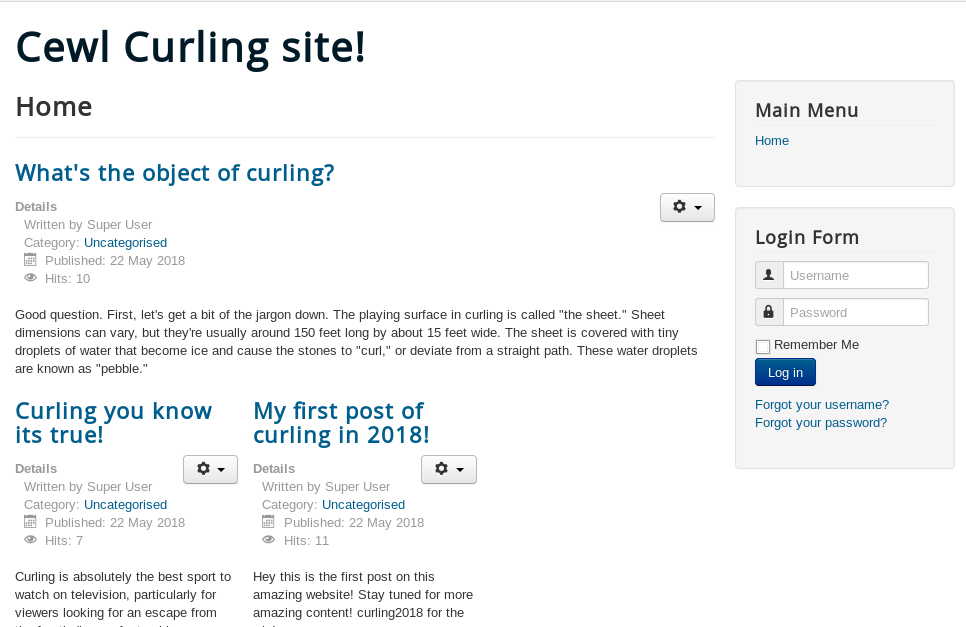
/robots.txt doesn’t reveal anything. So, we’ll fire up a directory brute forcer like dirbuster.
Using dirbuster with the medium wordlist and recursive scan we get a interruption shortly after starting:
Apparently the hostfile at http://10.10.10.150/index.php/2-uncategorised/logo/thereIsNoWayThat-You-CanBeThere/ has been removed. This means the directories and the displayed file probably no longer exist. If we examine the response HTML carefully, we see a listing for a secret.txt that has been commented out. Interesting.
This actually made me think, did I actually check the source code of the index page properly? Scanning to the bottom of the live website we see the exact same commented out secret.txt. Welp. That’s a lesson to myself, always check the source code thoroughly. We didn’t even need dirbuster after all.
Anyway, trying 10.10.10.150/secret.txt reveals a secret file!
This is a base64 string which we can translate back into ASCII. This gives us a string Curling2018!. This seems like a good candidate for a password for something. Lets try it against the the site admin panel.
But wait, we don’t have a username yet. We’ll try admin, administrator, user, the common stuff. Nothing. Looking over the webpage posts again for hints we see the first post was signed by floris. Let’s try that.
And it works. If we log in as floris with Curling2018! as the password we are now the admin of the site.
There’s not much we can do on the blog so let’s see if we can get into the Joomla admin. The Joomla admin area lives at:
10.10.10.150/administrator
Trying the same login works and we’re now into the Joomla administrator section.

Now we have admin, the next thing to do is to upload a PHP shell to the server to get access to the filesystem.
There are a lot of different ways to do this and a lot of different PHP shell variations. The tutorial I feel like a lot of people saw was here. Basically, go to the template manager and rewrite the index.php file of the template to your shell PHP code. Then navigate to 10.10.10.150/index.php and your shell will be there. How do I know a lot of people probably used this?
Well over the course of doing this box, there were SO MANY people overwriting the index.php file. In some cases this effectively destroyed the box until a reset (sometimes just the webpage would be dead, other times the admin area would also be dead). All that was accessible was the shell. A lot of people used the p0wny shell for this.
I wanted to find a way to get a shell without killing the box or disrupting it for others who were currently working on it. It took a bit more research but I found a good method (Note: see the link to LiveOverFlow’s video at the bottom for a much simpler way to get the shell):
There’s a PHP reverse shell called weevely that’s actually conveniently built into Kali Linux (you can find instructions on github). You generate a PHP file with a password and upload it somewhere to the server where the PHP code will be executed. I needed to find another location besides that damn index.php file.
Luckily the Joomla administrator area has the ability to install extensions. I found a file explorer called eXtplorer which is a PHP based file manager. You can install this by downloading the zip and uploading it to Extensions > Manage > Install.
Ok cool, our file explorer is installed. Next we go to Components > eXtplorer and it will open it up in a new window. Here we have access to a lot more files that exist on the website.
In researching this where to put this non invasive file, I saw some posts of people asking what to do with malware they had found in their /tmp folders. This is because the /tmp folder usually has quite high (if not the highest) permissions so attackers often store malware here.
What we’re concerned with for our weevely shell is making the path to the shell accessible. There’s a blank file called index.html already in the tmp folder.
Let’s see if the path is accessible i.e. http://10.10.10.150/tmp/index.html
Success! The files are accessible. Seems we’ve found a perfect place to store the shell script. Let’s upload it then. Checking that its there:
Cool. Now we can go to our terminal and type:
weevely http://10.10.10.150/tmp/shell.php *password*
And we’re in. We have access to the web server as www-data. Time to find that user.txt file.
Hunting around the file system, we get to thefloris home directory. Here we can see our user.txt file. Unfortunately, we don’t have permission to read it.
We’ll have to be logged in as floris to get at that file. There is another interesting file here though:
Lets see what’s in password_backup:
A hex dump. The first few characters (BZh) indicate that this dump is of a BZip2 file. There’s a few operations you can do to sort out this data in the terminal, but I have a tool for dealing with this mess: CyberChef. Dropping the hex dump in and using the magic recipe, CyberChef will attempt to decode the data with as many operations it needs:
As you can see, I loaded up the recipe it suggested and viola, we have a password file. This MUST be our SSH password for the user floris. Lets try:
ssh floris@10.10.10.150
and if we enter the password, we are successfully logged in as user floris. Now let’s get that user.txt file:
Now we need to get root. Since we don’t have any further information or files that could help us, we’re looking at some sort of privilege escalation or something else sneaky. If we ls -la we see something interesting:
For one, .bash_history has a symbolic link to /dev/null. Hmm. This was not anything of value. What is of value is what’s in theadmin-area folder.
We have a input file and a report file:
The contents of the input file are:
url = "http://127.0.0.1" and the report file contains the HTML for the root page of our webserver i.e. index.php of the curling site.
With a name like Curling, this box probably has something to do with the curl command. A lot of these boxes have a hidden meaning to them e.g. Valentine focused on the Heartbleed bug. The input file matches one of the options for curl -K. The -K flag means “specify an input file” to read arguments from. With this option we can also get files by using the file:// URI.
So, some process is running that gets what lives at the address in the input file gets and stores the output in the report. We can tell this is happening because if we try rewrite the input file with something like:
url = "file:///etc/passwd"
We get our etc/passwd file in report and then after a short interval the input file is rewritten to the default url = "http://127.0.0.1".
Also, if you look at the last modified dates you cans see the input and report files have been changed less than a minute ago. Something is definitely periodically changing these files.
Let’s use watch to see what if we can identify the process:
watch -n1 'ps -ef | grep root | tail -15'
The -n *num* flag will refresh the executing program every *num* seconds. There’s a bunch of other unimportant processes running so we cut down to the root permission processes at the bottom of the list with | grep root | tail -15:
And there we have our curl command that is being run. This confirms what we thought. Let’s try use that file URI to see if we can get our root.txt. The input and report files belong to root so will run with root permissions.
Let’s change our input file to the location of our root.txt file:
url = file:///root/root.txt
Now if we watch the report file with:
watch cat report
And wait for a few moments we get this:
Our root.txt hash. Awesome. If you wait around for a bit longer you’ll see the report file revert to the index.php file due to that process kicking in again.
So there you have it, that’s how I solved the Curling box.
Note: Watch LiveOverflow’s video for a more thorough rundown of this box (and getting a root shell at the end). He is a PRO at this stuff so a lot of the steps he takes are a lot simpler and smarter than what I’ve done.

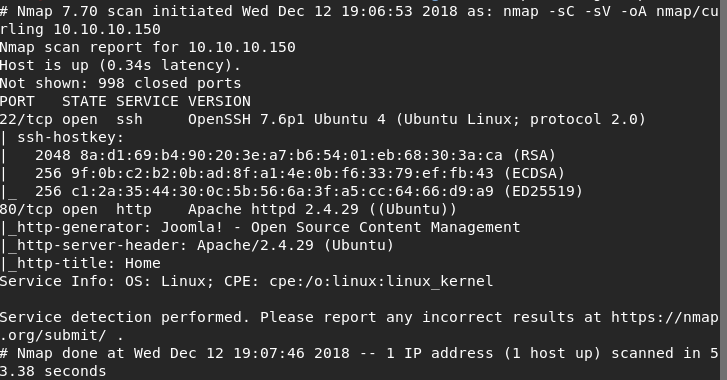
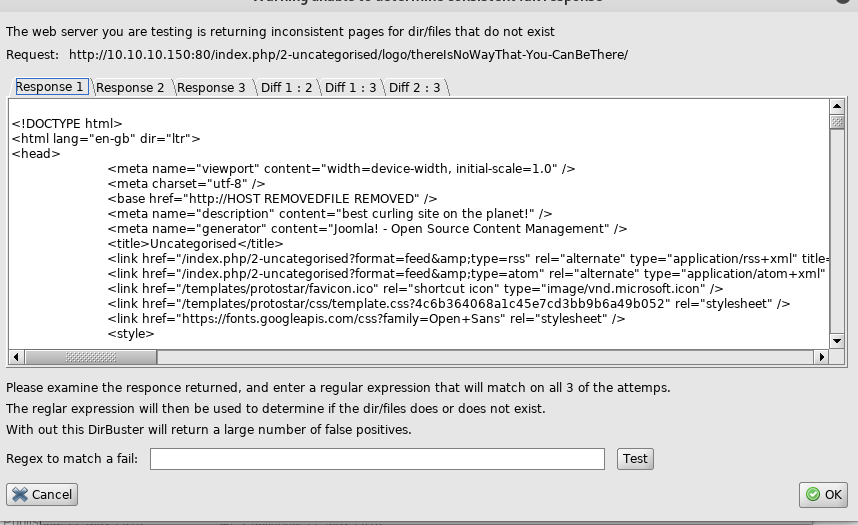
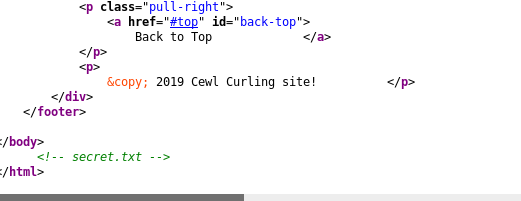

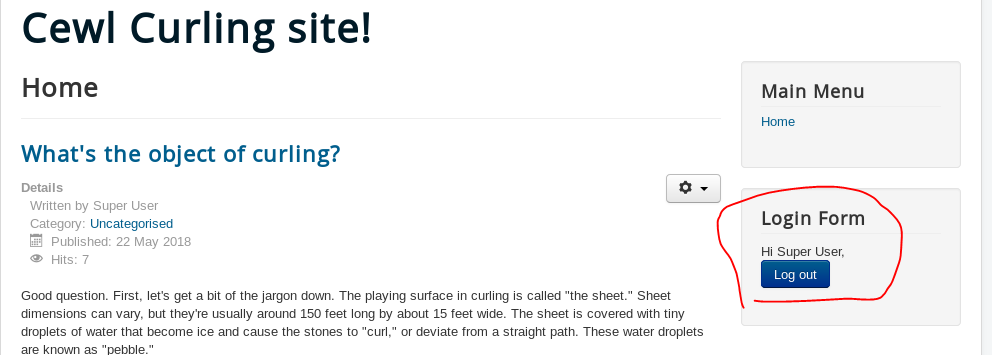

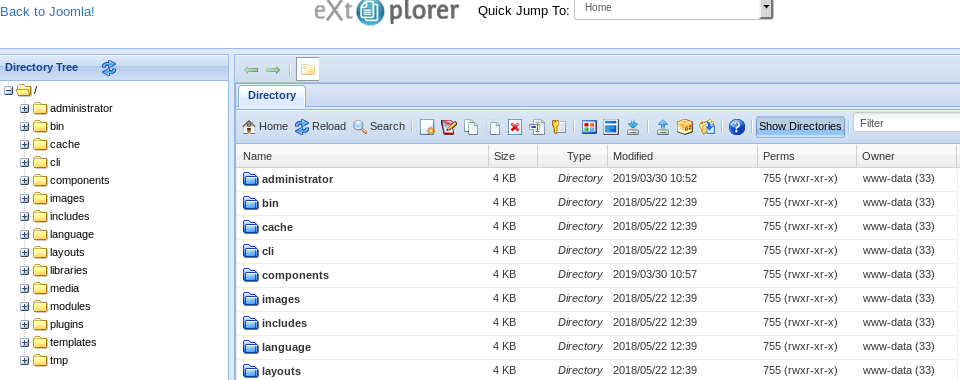



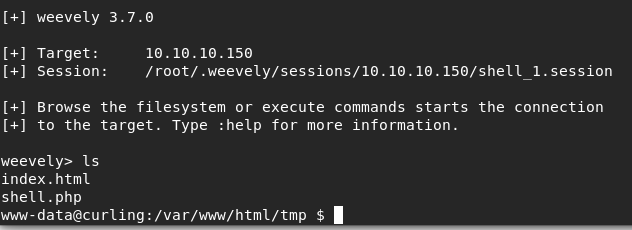


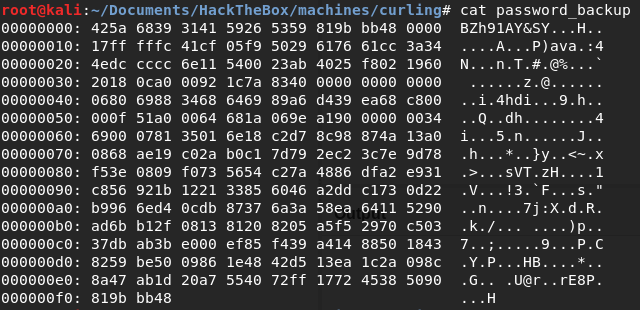







Leave a comment